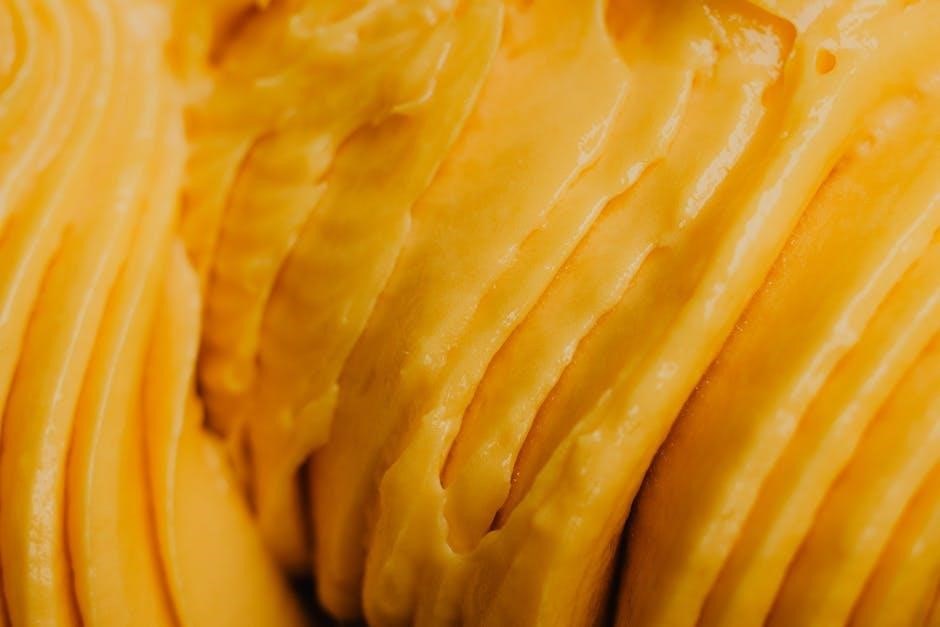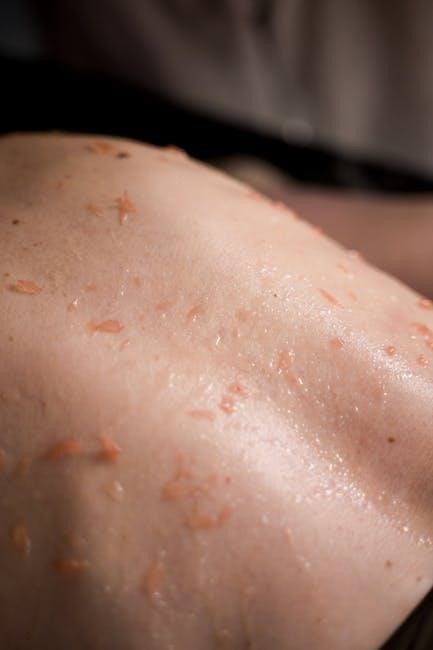All Flesh Must Be Eaten is a survival horror roleplaying game offering customizable settings through its Deadworlds‚ allowing players to explore diverse storylines. It emphasizes survival against undead threats‚ drawing inspiration from classic horror themes and movies like Night of the Living Dead.
1.1 Overview and Background
All Flesh Must Be Eaten is a survival horror roleplaying game published by Eden Studios‚ offering a unique blend of customizable settings and terrifying gameplay. The game is designed to immerse players in a world overrun by the undead‚ where survival is the primary goal. Its core concept revolves around the idea of “Deadworlds‚” which are customizable settings that allow players and game masters to craft unique storylines and scenarios. This flexibility makes the game highly adaptable‚ catering to a wide range of horror themes and playstyles.
The game’s origins trace back to the early 2000s‚ with its Revised Edition gaining popularity for its detailed rules and immersive storytelling. The core rulebook provides everything needed to play‚ including character creation‚ combat mechanics‚ and a variety of undead threats. Players can choose from diverse character archetypes‚ each with unique abilities and flaws‚ adding depth to the gameplay experience.
The game’s success led to the release of several supplements‚ such as The Book of Archetypes and The Book of Equipment‚ which expand the game’s possibilities. These resources offer new character options‚ weapons‚ and scenarios‚ further enriching the survival horror experience. All Flesh Must Be Eaten has become a staple in the RPG community‚ praised for its ability to blend horror and strategy seamlessly.
1.2 Historical Development
All Flesh Must Be Eaten‚ developed by Eden Studios‚ first emerged in the early 2000s as a unique entry in the roleplaying game genre. The game gained traction for its blend of survival horror and customizable gameplay‚ offering players a dynamic experience through its “Deadworlds” concept. Over time‚ the game evolved‚ with a Revised Edition released to refine its mechanics and expand its content.
The Revised Edition became a cornerstone of the game‚ introducing a streamlined ruleset and enhanced storytelling elements. This version solidified All Flesh Must Be Eaten as a standout title in the horror RPG category‚ attracting a dedicated fan base. The game’s success led to the creation of supplementary materials‚ such as The Book of Archetypes and The Book of Equipment‚ which further enriched the gameplay experience.
Historically‚ the game has been praised for its adaptability‚ allowing players to craft their own survival horror stories. The release of the core rulebook and subsequent supplements in PDF format made the game more accessible‚ contributing to its enduring popularity. Today‚ All Flesh Must Be Eaten remains a cult classic‚ celebrated for its ability to merge terrifying narratives with strategic gameplay.
1.3 Reception and Impact
All Flesh Must Be Eaten has garnered a dedicated fan base and critical acclaim for its unique approach to survival horror roleplaying. The game’s flexibility and customizable Deadworlds have been praised‚ allowing players to immerse themselves in diverse horror scenarios. Its success has led to the release of multiple supplements‚ including The Book of Archetypes and The Book of Equipment‚ which further enhance gameplay.
The game’s impact on the RPG community is evident in its enduring popularity‚ with many players appreciating its blend of strategic mechanics and narrative depth. The availability of the core rulebook and supplements in PDF format has made it accessible to a wider audience‚ contributing to its cult following. All Flesh Must Be Eaten remains a standout title in the horror genre‚ celebrated for its ability to evoke fear and excitement in equal measure.
Its influence can be seen in various horror-themed RPGs that followed‚ as it set a benchmark for survival horror storytelling. The game’s success has also inspired fan-created content‚ including new archetypes‚ equipment‚ and adventures‚ further enriching the player experience. All Flesh Must Be Eaten continues to be a beloved choice for fans of survival horror and roleplaying games alike.
Core Rules and Gameplay Mechanics
All Flesh Must Be Eaten offers a flexible system for survival horror‚ featuring character creation with customizable skills and attributes. Combat and survival mechanics emphasize strategy and resource management‚ while the game’s Deadworld settings provide diverse scenarios for immersive gameplay.
2;1 Key Features of the Core Rules
The core rules of All Flesh Must Be Eaten provide a robust framework for survival horror roleplaying. Central to the game is the concept of Deadworlds‚ which are customizable settings that allow players and Game Masters to craft unique narratives. The system emphasizes flexibility‚ enabling players to create characters tailored to their preferred playstyle through a detailed attribute and skill system. Combat mechanics are designed to enhance tension‚ with a focus on strategic decision-making and resource management. The game also incorporates a variety of survival elements‚ such as scarcity of supplies and the psychological impact of horror‚ to immerse players in the experience. The core rules are supported by a task resolution system that balances simplicity with depth‚ making it accessible to new players while offering complexity for veterans. Additionally‚ the game includes tools for creating custom scenarios and adapting the rules to fit different themes and settings‚ ensuring a high degree of replayability. These features collectively make All Flesh Must Be Eaten a versatile and engaging choice for fans of survival horror RPGs.

2.2 Character Creation and Attributes
Character creation in All Flesh Must Be Eaten is highly customizable‚ allowing players to craft unique survivors tailored to their preferred playstyle. The game uses a point-based system for assigning attributes‚ which determine a character’s physical and mental capabilities. Attributes such as Strength‚ Dexterity‚ and Intelligence are balanced to ensure versatility in both combat and non-combat scenarios. Skills are developed based on these attributes‚ enabling characters to specialize in areas like combat‚ stealth‚ or survival. Players can also choose from a variety of Qualities and Drawbacks‚ which add depth to their characters by providing bonuses or penalties. For example‚ a character might gain increased resistance to fear but suffer from a debilitating phobia. The system encourages creativity‚ allowing players to define their characters’ backgrounds and motivations‚ which can influence gameplay. Equipment selection is also integral to character creation‚ with players choosing gear that aligns with their character’s role and the game’s setting. This flexibility ensures that each character is distinct and adapted to the challenges of the Deadworld they inhabit.
2.3 Combat and Survival Mechanics
Combat in All Flesh Must Be Eaten is fast-paced and deadly‚ emphasizing survival over outright combat dominance. The game utilizes a hazard system‚ where characters face threats ranging from hordes of undead to environmental dangers. Combat resolution is based on the Unisystem‚ using a single d10 roll to determine success or failure. Players can choose between ranged and melee combat‚ each with unique mechanics and risks. Ranged combat emphasizes accuracy and resource management‚ while melee combat focuses on brute strength and tactical positioning.
Survival mechanics are central to the game‚ with characters needing to manage resources like ammunition‚ health‚ and morale. The game introduces a “Hazard Class” system‚ where the undead are categorized based on their threat level‚ from slow-moving corpses to faster‚ more aggressive predators. Critical successes and failures add unpredictability to encounters‚ keeping players on edge. Characters can also suffer injuries that persist beyond individual sessions‚ adding a layer of realism and stakes to gameplay.
Environmental hazards‚ such as darkness‚ traps‚ and limited supplies‚ further challenge players. Scavenging for supplies and fortifying safe zones are crucial to long-term survival. The interplay between combat and survival mechanics creates a tense‚ immersive experience‚ forcing players to balance immediate threats with long-term goals. This blend of strategy and horror ensures that every encounter is memorable and impactful.

The Book Series and Supplements
The All Flesh Must Be Eaten series includes core rulebooks and supplements like The Book of Archetypes 1 & 2 and The Book of Equipment. These expand character customization‚ gear‚ and settings‚ offering players diverse options for survival horror storytelling and gameplay.

3.1 The Book of Archetypes 1
The Book of Archetypes 1 is a foundational supplement for All Flesh Must Be Eaten‚ offering a wide array of character archetypes to enhance gameplay. These archetypes provide pre-designed templates‚ allowing players to quickly create characters tailored to specific roles or themes within the survival horror setting.

Each archetype includes detailed descriptions‚ skill sets‚ and background information‚ enabling players to dive into the game without extensive customization. From survivors and leaders to specialists like medics or tactical experts‚ the book covers a broad range of character types. This diversity ensures that players can craft unique personalities and abilities‚ enriching the storytelling experience.
The supplement also introduces optional rules and mechanics to further customize characters. For instance‚ players can explore supernatural elements or unique drawbacks‚ adding depth to their roles. The Book of Archetypes 1 is a valuable resource for both new and experienced players‚ offering inspiration and flexibility in character creation. Its content seamlessly integrates with the core rules‚ making it an essential addition to any All Flesh Must Be Eaten campaign.

- Provides pre-designed character templates for quick creation.
- Includes a variety of roles‚ from survivors to specialists.
- Enhances customization with optional rules and mechanics.
- Supports both new and experienced players with diverse options.
Overall‚ The Book of Archetypes 1 is a comprehensive tool for crafting compelling characters in the survival horror universe of All Flesh Must Be Eaten‚ ensuring dynamic and engaging gameplay.
3.2 The Book of Archetypes 2
The Book of Archetypes 2 is the second installment in the archetype series for All Flesh Must Be Eaten‚ expanding on the character creation options introduced in the first book. This supplement offers a fresh collection of pre-designed archetypes‚ each tailored to enhance the survival horror experience. Players can explore new roles‚ such as supernatural survivors‚ martial artists‚ or tech specialists‚ adding depth to their campaigns.
Like its predecessor‚ The Book of Archetypes 2 provides detailed character templates‚ complete with skills‚ attributes‚ and background stories. However‚ it introduces more complex and niche archetypes‚ catering to players seeking unique playstyles. The book also includes optional rules for further customization‚ allowing players to tweak abilities or add unique drawbacks for a more personalized experience.
This supplement is particularly useful for players who want to diversify their characters without spending extensive time on customization. The archetypes are designed to fit seamlessly into any Deadworld setting‚ making them versatile for various campaign themes. Whether you’re a veteran player or new to the game‚ The Book of Archetypes 2 offers fresh ideas and inspiration to elevate your gameplay.
- Introduces new and complex character archetypes.
- Expands customization options with optional rules.
- Designed for both experienced players and newcomers.
- Compatible with all Deadworld settings.
Overall‚ The Book of Archetypes 2 is a valuable resource for players seeking to diversify their characters and explore new possibilities in the All Flesh Must Be Eaten universe.
3.3 The Book of Equipment
The Book of Equipment is a comprehensive supplement for All Flesh Must Be Eaten‚ focusing on the tools‚ weapons‚ and gear essential for survival in a world overrun by the undead. This resource provides players and Game Masters with an extensive catalog of equipment‚ ranging from everyday items to advanced technology and supernatural tools. The book is designed to enhance gameplay by offering practical and thematic options for character customization.
One of the key features of The Book of Equipment is its attention to detail. It categorizes items into logical groups‚ such as melee weapons‚ firearms‚ armor‚ and survival gear‚ making it easy for players to choose appropriate tools for their characters. The supplement also includes rules for crafting‚ scavenging‚ and maintaining equipment‚ adding depth to the survival horror experience.
In addition to standard equipment‚ the book introduces unique items tailored to the game’s apocalyptic setting. Players can access improvised weapons‚ such as baseball bats or Molotov cocktails‚ as well as specialized gear like night vision goggles or medical kits. These options help players adapt to the challenges of their Deadworld‚ whether it’s a modern city or a post-apocalyptic wasteland.
The Book of Equipment also includes optional rules for resource management‚ allowing players to track ammo‚ fuel‚ and other vital supplies. This adds a layer of realism and strategy to the game‚ as characters must scavenge and ration their resources carefully. The supplement further expands the game’s flexibility‚ ensuring that no two campaigns feel the same;
Overall‚ The Book of Equipment is an indispensable resource for fans of All Flesh Must Be Eaten‚ offering a wide array of gear and rules to enrich the survival horror experience.

Character Development and Progression
Characters in All Flesh Must Be Eaten grow through experience‚ enhancing skills and attributes. Customization options allow players to tailor their characters‚ ensuring unique progression paths. This system emphasizes adaptability‚ crucial for surviving the game’s survival horror challenges.
4.1 Role of Character Classes
Character classes in All Flesh Must Be Eaten serve as foundational templates‚ defining a character’s role and abilities. These classes provide a starting point for players to create unique characters‚ balancing combat‚ survival‚ and role-playing aspects. Each class comes with specific attributes‚ skills‚ and equipment‚ allowing players to tailor their characters to fit the game’s survival horror theme.

The classes act as a framework for customization‚ enabling players to adapt their characters to the game’s diverse Deadworld settings. For example‚ a “Survivor” class might emphasize endurance and resourcefulness‚ while a “Soldier” class focuses on combat prowess. This flexibility ensures that characters can evolve to meet the challenges of their environment‚ whether it’s a zombie-infested city or a supernatural wasteland.
Archetypes‚ as detailed in The Book of Archetypes supplements‚ further expand on these classes. Players can choose from a variety of predefined archetypes‚ such as the “Leader” or “Scout‚” each with unique traits and abilities. These archetypes not only enhance gameplay but also enrich the narrative‚ helping players immerse themselves in the survival horror experience;
Ultimately‚ character classes in All Flesh Must Be Eaten are designed to enhance both gameplay and storytelling. They provide structure while allowing for creativity‚ ensuring that each character is a vital part of the group’s survival strategy.
4.2 Skill Trees and Customization
In All Flesh Must Be Eaten‚ skill trees and customization options allow players to craft unique characters tailored to their preferred playstyle. The game offers a flexible system where players can allocate points to enhance attributes‚ skills‚ and special abilities‚ ensuring a high degree of personalization. This system enables characters to grow and adapt as they face the challenges of the survival horror setting.
Players can choose from a wide range of skills‚ such as combat‚ survival‚ and social interaction‚ each with varying levels of proficiency. Equipment and gear also play a crucial role in customization‚ as detailed in The Book of Equipment. Weapons‚ armor‚ and tools can be selected based on the character’s background and the specific Deadworld they inhabit‚ adding depth to both gameplay and storytelling.
The game’s customization extends to character archetypes‚ as explored in The Book of Archetypes series. These archetypes provide predefined templates‚ such as the “Leader” or “Scout‚” which can be further modified to suit individual preferences. This blend of structure and flexibility ensures that no two characters are alike‚ even within the same class or archetype.
By combining skill trees with equipment and archetype choices‚ players can create complex and dynamic characters. This customization not only enhances gameplay but also enriches the narrative‚ making each character a unique contributor to the group’s survival.

4.3 Experience Points and Leveling Up
In All Flesh Must Be Eaten‚ experience points (XP) serve as the primary mechanism for character progression and growth. Players earn XP by overcoming challenges‚ completing objectives‚ and surviving the horrors of the Deadworlds. As characters accumulate XP‚ they gain levels‚ which unlock opportunities to enhance their abilities and attributes.
Leveling up allows characters to increase their attributes‚ improve skills‚ or acquire new abilities‚ making them more formidable against the undead hordes. The system is designed to reward survival and adaptability‚ with XP often tied to the group’s success in navigating the perilous environments and story-driven scenarios.
Character advancement is further enriched by the game’s customization options‚ enabling players to tailor their progression to suit their preferred playstyle. Whether focusing on combat prowess‚ survival skills‚ or supernatural abilities‚ the XP system provides a structured yet flexible framework for growth.

This progression system ensures that characters evolve dynamically‚ reflecting their experiences and contributions to the group’s survival. The ability to specialize and improve over time adds depth to the game‚ making each character’s journey unique and engaging within the survival horror framework.
